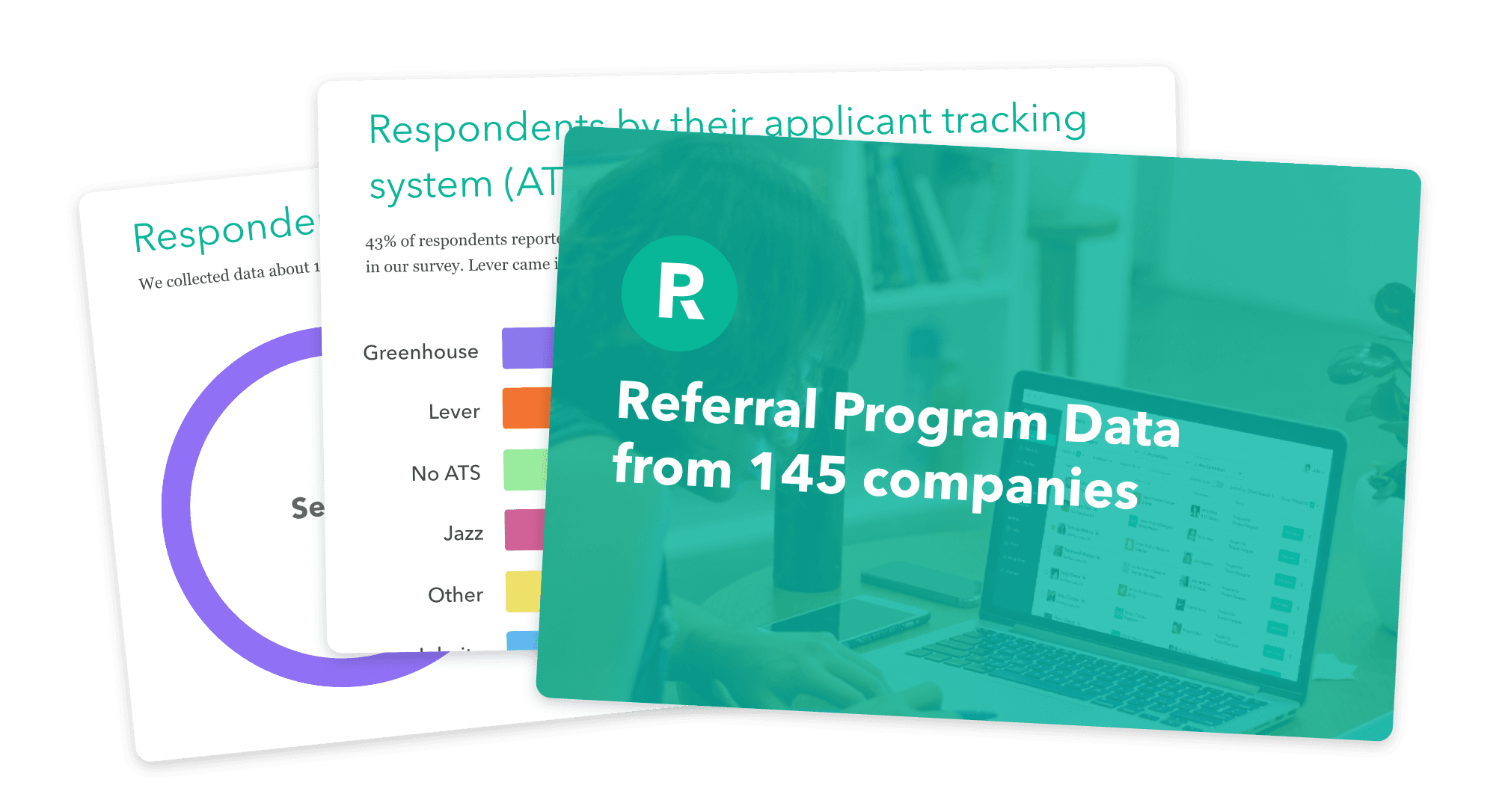If you’ve ever had to fight an internal battle to get an employee referral bonus approved, this post is for you.
Referrals and networking are the undisputed best sources of hires, but it’s notoriously hard to get budget to work on a strategy for them.
Don’t take my word for it; believe this set of comprehensive articles or these other studies from Stanford, Berkeley, or even the Federal Reserve. Or SHRM.
Ok great, so referrals are important, and I’ve read all the blog posts about “Five tactics to get more referrals” — but most of them lack aggregate data that can help you measure how you’re doing against the competition – other companies that are hiring the same talent as you.
We surveyed 145 companies and asked them how they’re doing. You can get the full report here, but I’ll save you some time and share the highlights below 🙂
The Average Company Hires 29 Percent of Their Hires Through Referrals
What’s interesting about this is that the companies that perform above average (i.e one standard deviation above) hire about 45 percent through referrals. So contrary to popular opinion of “happy thirds,” it’s more like “average thirds.” If you want to be better than average, you might want to aim higher.
Offering Rewards Is Provably Better Than Not
Some companies have a very philosophical internal policy about not offering any kind of reward for referral-based hires. Reasons like “it’s not good for our culture” or “employees already get a salary they’re not entitled to a reward” are popular among executives not wanting to shell out the extra dough, or simply being too lazy to deal with another policy.
But, our report found that companies that did not offer a reward only had 21 percent hires through their referral programs on average.
Does Your ATS Matter for Getting More Referrals?
This is going to be a controversial one. Out of the companies surveyed, we found that referral results were largely agnostic to which ATS they used. For every single ATS in the survey, we found both companies that outperformed and underperformed the average by a significant margin. But admittedly, our sample-set per ATS was relatively small, so I’d encourage other folks doing surveys to try and get a bigger dataset to either reinforce or debunk this conclusion.
Another report that coroborates some of our findings is the recruiting trends report published by Lightspeed Ventures earlier this year, although it mostly surveyed startups and we looked across companies of all sizes.
Takeaways (based on data skewed toward private tech companies)
- The average referral based hires is 29 percent, with 45 percent being one standard deviation above
- Offering some reward performs better than offering no reward
- Of the companies that offer rewards, a majority opt for cash
- Rewards beyond $4,500 offer diminishing returns on referral hiring percent
- Companies 4 to 6 years old may want to pay special attention to referrals
- No significant impactfrom ATS choice on referral hiring success
- Companies are beginning to turn to external referrals to augment existing referral programs
